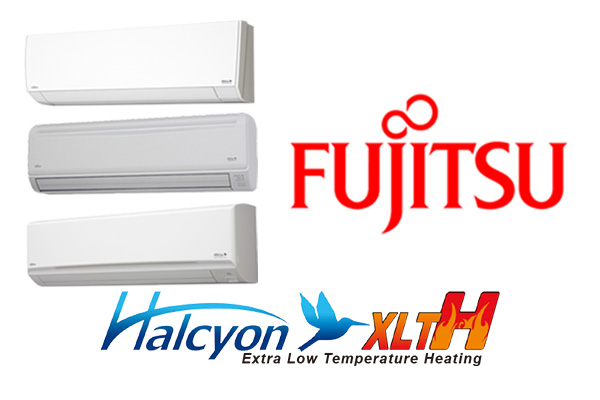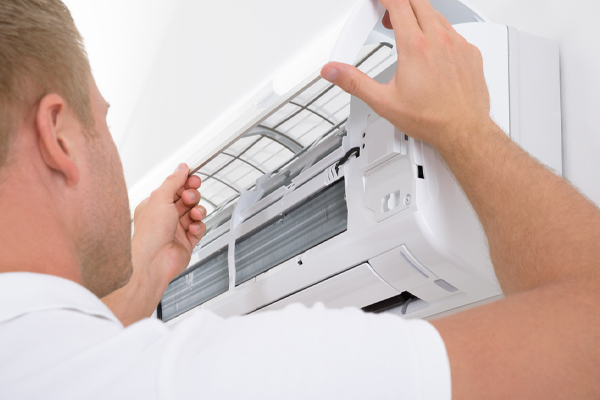 If you own a large house, you probably have rooms that do not have occupants at various times of the day. For instance, the master’s bedroom is empty when you go to work. The living room may only be used after your work. The kitchen might also be occupied during the mornings. Therefore, having a central air system can waste a lot of energy by heating or cooling areas that do not need them as much. It might be time to have a ductless mini-split heat pump installed in your home. This system will help improve your home’s energy efficiency with the use of HVAC zoning.
If you own a large house, you probably have rooms that do not have occupants at various times of the day. For instance, the master’s bedroom is empty when you go to work. The living room may only be used after your work. The kitchen might also be occupied during the mornings. Therefore, having a central air system can waste a lot of energy by heating or cooling areas that do not need them as much. It might be time to have a ductless mini-split heat pump installed in your home. This system will help improve your home’s energy efficiency with the use of HVAC zoning.
One of the many pressing questions homeowners often ask is “How many mini splits do I need?”. Read on to find out more about this query in detail.
How A Multi-Zone Ductless Setup Works
More homeowners are switching to ductless mini-split systems as these are gaining more popularity across the U.S. The name “ductless” refers to the two main components, namely, the outdoor and indoor unit. They are connected by conduit binds that allow the refrigerant to travel between them.
Having a ductless mini-split means you do not need to install a network of ducts. It is also highly versatile as you can use a mini-split for both cooling and heating. You can even configure different zones, each of which can have its own temperature setting.
A single outdoor unit can support as many as eight indoor air handlers. One air handler is usually enough to cool or heat a zone. You can choose to have one indoor unit per room or floor. This allows you to set the temperature in each zone depending on the occupant’s preferences. This way, everyone gets the temperature setting they want, and there will be fewer quarrels about it.
If you want to know how many zones your house needs, consult with a licensed HVAC technician. They will inform you of the best solution based on your heating and cooling needs. One of the benefits of ductless units is that you can add more zones later when needed. Hence, you do not need to buy all indoor units in one go.
The Advantages Of Ductless Mini-Split Systems
Some of the pros of having a ductless HVAC system are:
1. No Need To Install HVAC Ducts

Some structures do not have any HVAC ductwork. It might be because the building was built before modern HVAC systems were invented. Unfortunately, installing a network of ducts can be a difficult, costly, and time-consuming endeavor. You will need to carve big holes across your walls and find a way to ensure that the ducts fit in your ceiling.
If you have a ductless mini-split, you will only need a small hole in an outside wall for the conduit to pass through. The hole will be around three inches in diameter which allows the refrigerant line, power cables, suction tubing, and drain line to go through it. Therefore, ductless mini-splits are easier and faster to install. The structural integrity of the building is not affected at all as well.
2. No Energy Waste From Duct Leakage
HVAC ducts develop cracks and holes as time passes. Unfortunately, these issues lead to the air leaking out instead of reaching its destination. Energy Star states that ducts cause around 30 percent of air leaks in homes. Your HVAC system will overstrain to compensate for this air loss. It will use more power as most of its work has gone to waste. Homeowners need to have an HVAC professional check their systems regularly to look for these leaks and seal them, which adds to the cost. If you have a ductless system, you don’t have to deal with this kind of problem.
3. Ductless Offers Improved Indoor Air Quality

Duct leaks can also cause poor indoor air quality. Dust and dirt from the ducts’ immediate surroundings can enter your house through these openings. They mix with the conditioned air and are distributed throughout your home. This can affect your health and well-being. It might trigger allergies and lead to respiratory issues over time. With a ductless system, you do not have to deal with such problems. Dustless systems are also equipped with more effective air filters. Therefore, a ductless system helps improve your home’s indoor air quality so your family can breathe healthier air.
4. Less Noise Due To Clever Design
Window air conditioning systems emit a considerable amount of noise. This is because the compressor is directly attached to the unit. A ductless unit has the compressor separate from the indoor air handler. This part is placed outdoors so that you do not hear noise from it when you are inside your home. This way, you can sleep soundly and without any annoying sound coming from your system. You can set the fans at the highest setting, but the sound still wouldn’t be as loud. The outdoor unit is also less noisy than those in standard heat pumps.
5. More Efficient Energy Consumption

Ductless mini-splits do not allow for air leaks to happen, so they operate more efficiently than central air units. It uses less energy but still provides the needed comfort level of your home. A ductless unit also lets you control each zone so you can turn off the air handlers in unoccupied rooms. This way, your system consumes less energy. This is helpful not only to the environment but also to your budget. After all, ductless systems have some of the highest HSPF and SEER ratings when compared to other HVAC units.
6. Lower Monthly Energy Bills
A system that uses less energy means you’ll have lower monthly energy costs. Switching to a ductless HVAC unit can be expensive at the onset. However, the significant reduction in the operational costs will ensure that the system pays for itself over time. With the high price of energy these days, installing a ductless system is a worthy investment.
Conclusion
Ductless mini-splits are highly versatile pieces of equipment. It lets homeowners create zones that you can control separately to suit their household’s varying needs. It allows you to have up to eight zones per outdoor unit. This amount should be enough for an average-sized home. You can always add more indoor and outdoor units should the need arise. Some of the advantages of a ductless HVAC unit include increased energy efficiency, lower utility bills, less noise, improved IAQ, and easy installation.
Call Point Bay Fuel For All Of Your HVAC Requirements

Point Bay Fuel offers high-quality HVAC services in Monmouth and Ocean Counties, New Jersey. Our company has highly trained and professionally certified contractors who conduct superior heating and cooling services, such as AC maintenance, boiler repairs, furnace replacements, and ductless system installations. Each of our friendly techs is equipped with extensive knowledge and experience to ensure accurate HVAC services at all times.
Rest assured that we offer highly competitive HVAC service rates in the area. Our tune-ups can enhance your comfort and energy efficiency while reducing your HVAC costs. We can also help you find the most fitting repair or replacement solutions that are within your budget. Your satisfaction is important to us, so all our works come with a guarantee. Book a service appointment with Point Bay Fuel today for a free, in-home estimate.
Contact us now by calling (732) 349-5059 to speak to one of our home comfort specialists!
The post How Many Zones Can A Mini-Split Have? appeared first on Point Bay Fuel.
No comments:
Post a Comment